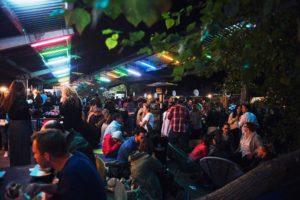Fodor's Expert Review Księży Młyn
This model city within a city was founded by the Scheibler and Grohman industrialist families, who were initially competitors but who have been partners and owners since 1921 in the largest cotton mill in Europe. Księży Młyn (or Priest's Mill) was a model industrial village with production facilities, shops, a fire department, hospital, school, railway station, residential quarters for the workers, and the owner's palace surrounded by a park. Today, it serves an interesting mix of new functions: offering luxury suites in the former factory building, a museum in the palace, and poorer housing mixed with artists' studios and galleries in the workers' quarters, where the "gentrification" progresses more slowly.
The palace (Rezydencja Księży Młyn)—called the Herbst Villa or Rezydencja Księży Młyn—under the management of Museum Sztuki, is now open to visitors, who can marvel at the fabulous and expensive taste of the early capitalists. It was home to... READ MORE
This model city within a city was founded by the Scheibler and Grohman industrialist families, who were initially competitors but who have been partners and owners since 1921 in the largest cotton mill in Europe. Księży Młyn (or Priest's Mill) was a model industrial village with production facilities, shops, a fire department, hospital, school, railway station, residential quarters for the workers, and the owner's palace surrounded by a park. Today, it serves an interesting mix of new functions: offering luxury suites in the former factory building, a museum in the palace, and poorer housing mixed with artists' studios and galleries in the workers' quarters, where the "gentrification" progresses more slowly.
The palace (Rezydencja Księży Młyn)—called the Herbst Villa or Rezydencja Księży Młyn—under the management of Museum Sztuki, is now open to visitors, who can marvel at the fabulous and expensive taste of the early capitalists. It was home to Edward Herbst, Karol Scheibler's son in law, who lived here with his wife Matylda. In former stables, there is a small but excellent gallery of 19th- and early 20th-century Polish paintings. The palatial villa stands in a lovely, well-kept park, where you can enjoy a cup of tea or a glass of wine; on a cold day, drinks and snacks can be had under the roof, in the winter garden.
READ LESS






